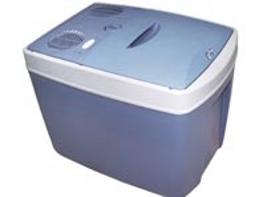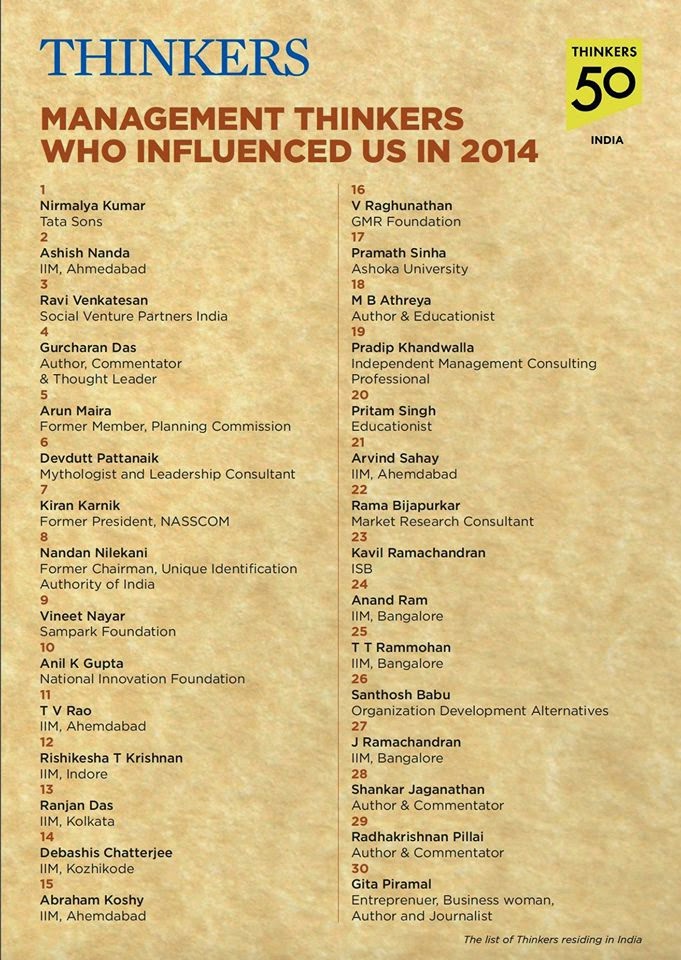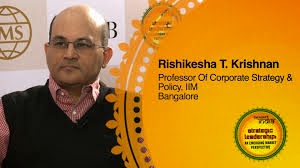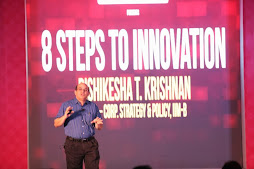At the recent CII Cost Congress held at Bangalore, Sanjay Lonial, General Manager, Disruptive Innovation, Godrej Appliances gave a fascinating presentation on Godrej’s Chotukool as an example of a disruptive innovation.
What’s a disruptive innovation? Companies often take existing products developed for mature markets and pull out features in an effort to reduce costs and re-design the product for use by consumers in cost-sensitive markets. Sanjay pointed out that such de-featuring tends to over-address needs. Instead, disruptive innovation provides no advanced features, but meets unmet needs. It provides superior performance along a different set of dimensions.
The objective of Godrej’s disruptive innovation s group is to do a “meaningful job….addressed through simple solutions….implemented with a winning business model.”
One objective of disruptive innovation is to remove barriers to consumption. Chotukool, a cooling product is one such low-cost solution for non-users. The focus of development of chotukool has been on the job / context – it is designed for people living in a one-room house, with no big need for ice; instead, it seeks to provide “just right” features and adequate functions.
Chotukool is quite different from a conventional refrigerator. It seeks to cool in the range of 5 to 15 degrees centigrade rather than the much colder temperatures achieved by a refrigerator. Cooling time of chotukool is longer at about 220 minutes compared to 90 minutes for a refrigerator. Chotukool weights only 9kg and is therefore easy to move around and transport. It’s capacity is considerably smaller than a typical refrigerator (43 litres vs 170 litres) and power consumption is also much less (15 to 65 W against 90 – 100W).
The chotukool offers several advantages – it has no moving components, is almost service free. Compared to the 200 components of a refrigerator, it has only 20 components. It is easy to use, easy to clean, easy to move, and can work on an inverter.
Godrej experimented with several cooling technologies, and finally solid state cooling chip was chosen. In fact the development of chotukool has involved a series of low cost experiments, and the product strategy has been “emergent,” based on learning and adjustment. Co-creation was an integral part of the chotukool story – several inputs came from a co-creation workshop held with women members of self-help groups on 7.2.2009 at Osmanabad.
A big challenge Godrej faced was how to reach consumers? – this needed business model innovation. For maximum reach, Godrej decided to partner with India Post. Chotukool requires demonstration and education which doesn’t happen in the trade, so Godrej was reluctant to use traditional trade channels.
Godrej decided to pilot the product in 4 districts to avoid competition, and slowly build up. Kiosks have been set up in post offices (in the 3 states where chotukool has been launched) for demonstrations. Orders are booked through the Post Office – the PO’s epayment system is integrated with Godrej’s ERP system. The postal van delivers in a week’s time and most customers don’t seem to mind the wait.
Godrej also sells chotukool B2B. For this, Godrej uses a separate “direct to shop” model – for a shop keeper, using chotukool translates into extra earnings of Rs. 50 / 100 per day.
To control costs, Godrej has been careful with tooling investments, supply chain costs (they don’t want to create a “poverty penalty” of adding on costs for delivery to distant places – hence they use the Post Office). There has been no advertising so far.
Chotukool sells at a retail price of Rs. 3790 – currently the full price has to be paid upfront and there is no EMI-based selling. Sanjay was non-committal about whether this would change. Chotukool is currently available only in 3 states; Godrej believes there is a need to maintain a long term relationship with customers.
Chotukool is a great story, but a recent report in DNA newspaper (December 5, 2011) quotes George Menezes, COO, Godrej Appliances, to say that 15,000 chotukools have been sold in Maharashtra so far. Given the size of the state and the potential market, that doesn’t seem to be a huge number. This raises some interesting questions. How do consumers see the price-performance equation of chotukool vis-à-vis that of a refrigerator? Are the barriers to the commercial success of chotukool distribution and logistics as Godrej seems to believe, or the acceptance of the product itself? And what are the implications for disruptive innovations for the Indian market?
What’s a disruptive innovation? Companies often take existing products developed for mature markets and pull out features in an effort to reduce costs and re-design the product for use by consumers in cost-sensitive markets. Sanjay pointed out that such de-featuring tends to over-address needs. Instead, disruptive innovation provides no advanced features, but meets unmet needs. It provides superior performance along a different set of dimensions.
The objective of Godrej’s disruptive innovation s group is to do a “meaningful job….addressed through simple solutions….implemented with a winning business model.”
One objective of disruptive innovation is to remove barriers to consumption. Chotukool, a cooling product is one such low-cost solution for non-users. The focus of development of chotukool has been on the job / context – it is designed for people living in a one-room house, with no big need for ice; instead, it seeks to provide “just right” features and adequate functions.
Chotukool is quite different from a conventional refrigerator. It seeks to cool in the range of 5 to 15 degrees centigrade rather than the much colder temperatures achieved by a refrigerator. Cooling time of chotukool is longer at about 220 minutes compared to 90 minutes for a refrigerator. Chotukool weights only 9kg and is therefore easy to move around and transport. It’s capacity is considerably smaller than a typical refrigerator (43 litres vs 170 litres) and power consumption is also much less (15 to 65 W against 90 – 100W).
The chotukool offers several advantages – it has no moving components, is almost service free. Compared to the 200 components of a refrigerator, it has only 20 components. It is easy to use, easy to clean, easy to move, and can work on an inverter.
Godrej experimented with several cooling technologies, and finally solid state cooling chip was chosen. In fact the development of chotukool has involved a series of low cost experiments, and the product strategy has been “emergent,” based on learning and adjustment. Co-creation was an integral part of the chotukool story – several inputs came from a co-creation workshop held with women members of self-help groups on 7.2.2009 at Osmanabad.
A big challenge Godrej faced was how to reach consumers? – this needed business model innovation. For maximum reach, Godrej decided to partner with India Post. Chotukool requires demonstration and education which doesn’t happen in the trade, so Godrej was reluctant to use traditional trade channels.
Godrej decided to pilot the product in 4 districts to avoid competition, and slowly build up. Kiosks have been set up in post offices (in the 3 states where chotukool has been launched) for demonstrations. Orders are booked through the Post Office – the PO’s epayment system is integrated with Godrej’s ERP system. The postal van delivers in a week’s time and most customers don’t seem to mind the wait.
Godrej also sells chotukool B2B. For this, Godrej uses a separate “direct to shop” model – for a shop keeper, using chotukool translates into extra earnings of Rs. 50 / 100 per day.
To control costs, Godrej has been careful with tooling investments, supply chain costs (they don’t want to create a “poverty penalty” of adding on costs for delivery to distant places – hence they use the Post Office). There has been no advertising so far.
Chotukool sells at a retail price of Rs. 3790 – currently the full price has to be paid upfront and there is no EMI-based selling. Sanjay was non-committal about whether this would change. Chotukool is currently available only in 3 states; Godrej believes there is a need to maintain a long term relationship with customers.
Chotukool is a great story, but a recent report in DNA newspaper (December 5, 2011) quotes George Menezes, COO, Godrej Appliances, to say that 15,000 chotukools have been sold in Maharashtra so far. Given the size of the state and the potential market, that doesn’t seem to be a huge number. This raises some interesting questions. How do consumers see the price-performance equation of chotukool vis-à-vis that of a refrigerator? Are the barriers to the commercial success of chotukool distribution and logistics as Godrej seems to believe, or the acceptance of the product itself? And what are the implications for disruptive innovations for the Indian market?















